Friday, August 24, 2007
Gift of a week
The students start their day early. Some are down at the barns below the soccer field by 6:30 a.m., and later I see them in the classrooms or the gardens or the agra-forest area. Many have just returned from their three-month “attachments” – internships back in their communities or with agricultural NGOs. I’ve learned that the two-year certificate program is 40% theoretical and 60% practical, a combination that works very well.
My days have another kind of rhythm. Monday I spent with Esther and met her husband and two children. Esther is a graduate of the Manor House program and wants to establish a mini-center to train other farmers in biointensive agriculture. We decided to meet at the cybercafé and from there, she said, it would be just five minutes to her house. Apparently that’s in African time. But getting there was a treat. For the first leg we walked across a big open area and past some old rail tracks, then on a dirt route between stalls of vendors that you don’t see if you’re buzzing through town by car. That brought us close to the edge of Kitale town where taxis sit and wait. The driver Esther approached quoted a ridiculously high price (because of me, the muzungu) so I suggested we go by boda boda. So that’s how we traveled the last few kilometers. It was cheap, it was fun, and it was air conditioned. These boda bodas are not motorized mini-bikes like those back in Kampala. Here in Kitale a boda boda is a bicycle, with a big cushioned pad over the rear tire where a passenger sits and relaxes while the rider pedals like crazy up and down long hills.
Walking a kilometer or so down a dirt road after hopping off the bicycle bodas, we reached the quarter acre of land where Esther and her husband built their house just this past year. In front of the house is a large maize garden, and behind the house is a vegetable garden, carefully double dug and planted with sukuma wiki (kale) and onions and flower borders. We ate the delicious lunch Esther had made, and then we walked around her garden and took photos and talked agricultural talk. Kids from the neighborhood joined Esther’s nine-year-old Faith, who wore a Seattle Seahawks T-shirt, and four-year old Ian who ran back and forth in shyness and excitement.
Tuesday I visited Samuel’s farm but I’ll write about it later because there is only so much my heart can process at once. Wednesday I stayed “home” to get underway with the writing for Manor House. Yesterday a few details and a couple visitors punctuated my writing time, then I went into town with Emmanuel who is back from Nairobi, but we discovered that the internet was down (Kenya-wide, they told us) so we couldn’t send or receive any email. That part of the week’s pattern was already familiar.
I am back to running right at sunrise after several “lazy” mornings when I didn’t get out til 7 or so. It’s barely light at 6:30 a.m. but intensely bright by 7:30. The strange equator sun! Such a distant cousin to the northern latitude sun with its long, slow angle to the horizon. I’ve branched out from the soccer field and now run down the lane and out to the road. It’s fun to run a ways on that main dirt road and see people starting their day, on foot and on bicycle and occasionally by donkey cart or matatu.
The matatus – taxi vans – I first learned about when my daughter Heather lived in Kenya. Heather’s Nairobi mom owned one, in addition to her job with an eye care NGO. But experiencing a matatu ride is another “you haven’t lived until you’ve done it” thing. It costs 50 bob (that’s less than a U.S. dollar, let’s see, about 78 cents) for a matatu ride from Manor House into town. The ride takes fifteen minutes but the wait may be an hour or more. To maximize his income, the driver fits in as many people as possible, and that’s more than I previously imagined. Everyone squeezes even tighter to make room for one more person. Then you bump along together. As the guy next to me on one ride said, smiling, “This is Africa.”
The climate here, at least at this time of year, is incredibly nice. According to Don, who googled Kitale’s altitude for me from his computer in Kodiak, this part of Kenya is 6,200 feet above sea level. That would account for the cool mornings that lead into the deliciously warm afternoons followed by the early evening thunderclouds that build, drop rain, then disappear before the next sunrise.
It’s wet season now, a little early some people say. In fact, the rains have been so torrential not far from here that several people died when their homes were washed away. Landslides just west of us, drought to the north. This too is Africa.
A note to Jan about driving: You’re quite right about the clutch pedal. It does remain on the left, even in cars with the steering wheel on the right. Thank goodness for that! It’s surprisingly easy to steer on the right side of the car and drive on the left side of the road even after a lifetime of doing otherwise. But if the clutch and brake and gas pedals got changed around…Yikes! We would have disappeared into a pothole for sure.
Sunday, August 19, 2007
Staying on the left and having fun
OK, let’s see if I can do a really weak paragraph transition…or maybe an abrupt change of subject! I AM still in Kenya! And I’ve had two days to relax and just hang out with the cows and geese and the Manor House students. I was afraid it would be sad to have everybody leave at the close of the conference, and I did feel the pangs of losing new friends. But it’s rejuvenating to rest up and take sunrise runs (alas, without Jane) and sunset strolls to see the students play soccer. Tomorrow I’ll get serious about finishing up the current writing projects – and later this week I’m going to visit several people in the area who want to show me their gardens.
I used up all my air time talking with Heather and Hanna last night, but I learned they’ll be in Tanzania a little longer than I’d thought, so I can linger here this week and then find a bus or plane heading south.
I’ve been busy plopping photos into this space and hope it doesn’t slow down the page. (I can’t tell because everything here is slow.) Maybe I’ll figure out some way to attach pics so that you can see them a little bigger.
Surprise! A short blog post!
Friday, August 17, 2007
Garden of Africa
To those of you who have shared this blog address with others, thank you! Blogging is a strange thing for a one-to-one person to be doing, but I’m not able to keep in touch as I’d like because online time is such a scarce commodity (and there’s no internet at all where I’m staying these days). I did succeed in pulling up my email account the last time I was in town, i.e., in Kitale, at a cybercafé with no coffee but lots of avid browsers. However, only a few email messages were able to load in the one hour before the cybercafé closed. The whole world may be connected but not at high speed! The IT guys here at this cybercafé have helped me as much as they possibly can. They’ve put me at a station on the outdoor balcony, let me plug in to their Cat-5 cable, configured my laptop, and pulled a canvas curtain around me to block the glare of the sun. But an email containing a couple photographs takes 30 minutes to load – if all else is going well. So patience is not an option. It’s a necessity. Maybe I’ll get lucky and the rest of my incoming emails will load…S-L-O-W-L-Y…while I’m here today.
So what am I doing in Kenya? I’m at Manor House Agricultural Centre (http://mhacbiointensive.org/) covering some events happening here. Manor House is a working farm and it’s also an agricultural college where people come to learn about biointensive agriculture, which uses methods like deep soil preparation and close spacing of plants to produce high yields even on small plots of land. It was founded in 1984 through its connection with Ecology Action, a U.S. nonprofit organization that promotes sustainable agricultural practices for small-scale farmers all over the world. Since so many people in Kenya and elsewhere in Africa grow their own food, the methods that Manor House teaches are ideal for this continent where people have limited resources but strong desire to build a future.
Last week, Manor House hosted about 140 Africans who came to meet and learn from John Jeavons, the American man who founded Ecology Action's sustainable mini-farming program and helped birth GROW BIOINTENSIVE gardening in Africa. This is the first time John has come to Africa, but it’s clear to me that the people here have loved and respected him for a long time. His weeklong workshop included theoretical sessions on topics ranging from water conservation to crop rotation, and hands-on sessions in the gardens where John and Manor House staff built a compost pile and demonstrated how to double dig the soil.
The participants – who have come from Uganda, Tanzania, Rwanda, Ethiopia, Madagascar, and Zambia as well as Kenya – are practicing farmers, teachers, community leaders, and current Manor House students. For me, they are an inspiring group of people who, along with John, are opening a window to the kind of gardening I want to do.
The workshop wrapped up last weekend with field trips to some of the extension centers where Manor House graduates teach people in their own villages about biointensive gardening. These places are models of community action, with gardens where maize, sorghum, and millet are grown as staples, and chard, carrots, potatoes, onions, and lots of other vegetables are grown to feed the participating families and to sell for income as well. The gardens are beautiful as well as bountiful and have become a way of life for the many people who have learned this way of growing crops. The three gardens right here at Manor House have incredibly tall maize and all kinds of other crops, some familiar to me and some – like amaranth – new. Since I grew up in corn-growing Nebraska, I love eating ears of roasted maize here in Kenya, which women vendors sell by the roadside. And I love eating the organic tomatoes and cabbage and steamed leafy greens that are served in the Manor House dining room every day.
This week Manor House is hosting a Pan-Africa agriculture symposium, another big event that has kept many of the workshop participants here for a second week and brought some new participants from agriculture NGOs (non-governmental organizations) and community programs. The conference room has been packed with east Africans who are brainstorming strategies for teaching and promoting sustainable farming in Africa. In between sessions, we talk, eat, and have a lot of fun.
The goal of John Jeavons and of Manor House here in western Kenya is to teach others how to grow crops sustainably even in the face of water scarcity and reduced arable land, conditions likely to intensify in the future. Small networks of people scattered around the continent are promoting agricultural methods that work for subsistence farmers. Their commitment is palpable and they are acutely aware of the challenges. They know that chemical fertilizers and genetically modified seeds are not the long-term solution nor is reliance on outside sources. And though this part of Kenya is the granary for the rest of Kenya, many parts of Africa do not have the rainfall and fertility that bless this province.
My role here as resident writer is one of those serendipitous things. Last winter one of Marion Owen’s weekly columns in the Kodiak Daily Mirror mentioned biointensive gardening and its founder John Jeavons. I don’t know Marion well but she’s an amazing Alaskan gardener, and her column led me to google GROW BIOINTENSIVE on precisely the same day that I started my search for volunteer work in Africa. (This is what one does on dark January days on Kodiak Island.) At http://www.growbiointensive.org/, the link to international partners popped out at me. I called Marion to ask if she knew anything about the biointensive programs in Africa and she suggested I call Ecology Action in California. When I did so, they suggested I email Manor House. So last February I wrote to this place in Kenya to inquire about volunteering with gardening or whatever they needed. Nyongesa, the acting director, emailed me back (now I understand why it took a couple of weeks to hear back from him). He wrote that Manor House did take volunteers but he wasn’t sure how they could best use my skills during the time of my proposed visit. He suggested I contact them later. But by the time I left Alaska in June, I had plans to stay in Uganda after the wedding and work with the Rakai project.
I’d nearly forgotten about Manor House when an email from Nyongesa arrived during my last week at Lyantonde. He told me about their upcoming events and said they needed a writer for the purpose of producing a report and maybe a newsletter. He asked if I was still willing to volunteer.
The signs of a path dropped gently into place are unmistakable.
An early morning Akamba bus – kind of a Ugandan Greyhound – took me east out of Uganda the day after my Lyantonde students gave me a heart-warming farewell. Rather than flying into Nairobi as so many Americans do, I entered Kenya by walking across the border from Tororo to Malaba then I got back on the bus with a bunch of Africans and one other muzungu – a young guy from Minnesota. I got off at Bungoma and caught a second bus that took me to Kitale town, then a local taxi carried me over the final, bumpy ten kilometers to Manor House. Even Eddie the taxi driver told me about the beans and maize he grows!
Before leaving Uganda, I told Nyongesa on the phone that I’d like to stay right on the farm, so I’ve been in a room with a big window facing east that looks out past the clotheslines to pastures and trees and the distant rolling hills. I fall asleep to rainfall lots of nights and wake up before the sun streams in. Geese forage in the yard and hens and chicks wander everywhere. My very first morning (while eating an egg and toast and drinking fresh passion fruit juice) I saw some of the farmhands walk past the dining hall carrying chickens by their feet. Then a couple more guys carried out a cauldron that sent steam into the morning air. It reminded me of being on my grandparents’ farm when I was a little girl. Food doesn’t get any fresher than what we’ve been eating here!
Though my role is to write about what’s going on, it’s pure bonus to be learning about sustainable, organic gardening and to be meeting the people who are gathered in this spot. My new friend Anastacia is a Manor House graduate who lives in the Maasai village of Narok. Her son Ambrose is a current student here. Esther lives right in Kitale and I’ll visit her garden before I leave Kenya. Of the four people here from Uganda, Josephine runs a program in Masaka which is just an hour away from Lyantonde, and Beatrice runs a program in Kabale. Amy, a photographer from Canada, is here with John to cover the events with her camera, so I’m part of a team – with John, Amy, Nyongesa, Emmanuel, Joshua, and so many others.
My day starts early with an hour or so at my laptop and then at 6:30 I slip out of my room to head to the soccer field where I meet Jane for a run. Jane is Kenyan, and about twenty years younger than I am, and we share a love for that early morning time. We made the plan at supper one night last week and since then have shared a sunrise run every morning. I wouldn’t be out there if it weren’t for her, and she probably wouldn’t be there without me. The only other people up at that hour are the kitchen staff and a farmer called Jeph, carrying pails of milk from the barn to the kitchen, while the roosters strut around crowing and the sun lifts itself above the acacia trees.
The dining staff – a wonderful group of waiters who are here to serve the hundred or so people staying in the guesthouses and dormitories – feed us a big breakfast (and morning tea, and lunch at about 2, and afternoon tea, and supper at 8), and we are in session all day in the conference center. Some days I think my laptop will burn up from the hours of input, but all those tea breaks give my keyboard and fingers a break and keep everybody alert. Not to mention the African singing (which automatically means moving the body) that someone jumps up to lead at the start of each session.
I wish Julie, the farm manager at the Rakai project, could be here. She would have so much to share with this network of people and to receive from them as well. But it’s a tribute to Manor House that so many did make it. The donor funding that made these events possible is small by western standards, but the positive exchange happening every day is boundless. If the future can be shaped by community energy and traditional wisdom mixed in with twenty-first century savvy, the soil will still be feeding the grandchildren of the people gathered here this week. But it will take a lot of work and all the help any of us can offer.
Wednesday, August 8, 2007
Living in Lyantonde...and moving on
After three weeks here, I’m getting a feel for life in Lyantonde. I wake up early in my little room, have tea and a chapatti here at the Sunshine, walk down the dusty street to the main road then take a little path that angles through a field to the school. Every time I come and go from town, the children who live along the way yell “Muzungu! Bye, muzungu!” and I call back “Hi, how are you!” The littlest ones don’t stop waving until I’m out of sight.
One day coming home, I heard a voice from afar shout Moo..zoon..goo!!!! I was on a stretch of road that had no houses. Startled, I looked in the direction of the exuberant call and there, through the thick brush and the trees way back from the road, a skinny arm was waving.
Walking around inconspicuously is not an option for me.
It would feel strange to be so acknowledged for my skin color if it weren’t for the enthusiasm of these kids. And they’re everywhere. At the market they follow me around as I pick out a papaya (“paw paw”) from one vendor and an avocado or two from another. When I walk to the project each day I’m often joined by students, who have walked much farther than I have. One day I heard footsteps running toward me from behind and I glanced back expecting to see one of my students. Instead, it was a student from the secondary school that sits just above our vocational school. I didn’t know her but she knew who I was, and we walked the rest of the way together.
Since I’m at the vocational center most days, I eat with the students and teachers. The school day includes porridge for breakfast and posho and beans for lunch. The porridge is made from maize flour cooked in a huge cauldron over fire in an earthen kind of stove. The students (who number about 100) keep their bowls tucked away here and there. Some of the first-year tailoring girls keep their bowls and cups lined up on one of the rafters in their classroom. When the gong sounds, everyone lines up outside the small brick building where the cooking is done. We drink the porridge and sometimes have sugar in it which we “stir” by pouring the porridge back and forth between two mugs. I’ve never seen a utensil at school unless you count the huge stick that the boys use to stir the porridge. Posho is also made from maize flour except it is so thick it’s cut with a knife. One of Uganda’s staples, posho is always eaten with “sauce” – ground nut, chicken, goat meat, or peas make some of the sauces whether at someone’s home or a café. Since I rarely eat meat, I’m happy that we get beans at school (they’re kind of like a pinto bean, and they’re sorted, soaked, and cooked every day). We eat with our hands – traditional Uganda style. Tubs of water are always nearby, and we pour water into each other’s hands to wash before eating.
I enjoy these meals! I’m always hungry and so happy to go eat, unlike the students (particularly the second-year tailoring class) who often are very slow to leave their work (today they were doing zippers for the first time and they were totally intent).
The Sunshine Hotel has become my home for this moment in time. It’s a small guesthouse with eleven rooms around a courtyard with a clothesline, which Nakahima fills with the towels and sheets she washes every day (by hand, and sometimes she sings while she’s at it, and I hear her from my room). The rooms are not often occupied but the open-air restaurant in front has many customers. My room is small (about 10 ft. by 10 ft.) and modest, but I have the luxury of my own bathroom so I don’t use the “squattie potties” in back. I pay 15,000 Ugandan shillings per day to be here. That’s about $9 in U.S. currency. My space is graced by a bed and two chairs and an end table. I’ve put the tiny table in the corner to hold the reading lamp that Julie, the farm manager, loaned me, and I’ve put the chairs beside the table. A sitting area! I occasionally get visitors - Rose and Tonopah, or Nicole with young Francis from the project, though now Nicole has returned to Denmark. One day I had about eight people in this little room. Everyone enjoyed my snacks!
When I return to the Sunshine at the end of each day, I am greeted with “Kulikayo, Carol!!” (Welcome back.) The staff – Gertrude, Asiati, Zahara, Rossette, Jowelia, Nakahima, Pheonah – are very attentive and they try to teach me Luganda. When I say, “Nvudeyo!” (I’m back!) they laugh with delight that they’ve succeeded in teaching me at least one thing. They have a rambunctious rapport with each other, and they treat me with tenderness. Back when I first arrived and asked for their names, Yasin declared “We are a mixed group.” He was very pleased to be the one man on staff. They’re a diverse group in many ways. When two women first showed me to Room 7, Gertrude informed me, “I’m Catholic” and Nakahima said, “I’m Muslim.” A curious way of introducing oneself, I thought then. But other people in town have made similar disclosures, as a way of telling something significant about themselves. “I’m Protestant,” Julius told me the other day, after the umpteenth time I bought water and biscuits at his little grocery, the “Ollie & M Supermarket.” It seems Lyantonde is a cross-section of Uganda. Many folks living in harmony.
My first week in Lyantonde, I realize now, was a really good power week. We had electricity all week! Until Friday. Then we lost power and it didn’t come back in any steady fashion for the next week. When it did come back that second week, it was often a weak version of electricity, enough to light the single incandescent bulb that hangs from my bathroom ceiling but not enough to power the small fluorescent tube in the room itself. Same thing when the Sunshine would turn on its generator. The tube would just flicker but not quite light up. So I’d leave the switch off and use Julie’s little reading lamp. And candles! Many mornings I’ve wished I could pop on the headlamp I used to wear for cross-country skiing on Anchorage’s trails on dark winter evenings. That light would be perfect for working on my laptop and reading in the dark. But it never occurred to me to pack it for Africa.
After my first week here I told Don on a phone call that I had hot water. Hot water! All the time! But then the water slowed to a trickle and soon I didn’t have water at all, hot or cold. I do have water to drink because I buy 5-liter jugs from Julius’ store and sometimes smaller bottles from the restaurant here at the Sunshine. But washing myself and my clothes was a little sketchy for a few days. Gertrude brought me a 20-liter jerrycan full of water so I could flush my toilet.
Then we had a day that started out sunny and bright just like every other day except I was really irritated. Reading by candlelight in the pre-dawn hours was wearing thin. My hair was matted with dust and dirt. So I wrapped a scarf around my head and set out, walking at a fast clip along the dry roadbed before a lorry came zooming along raising those clouds of dust so awful to breathe. I went first to the office in the hope of catching an internet moment and found a computer free but alas! once again, no luck getting online. Things were just fine once I got to school though. The first year students were finishing their paper bag shirts and hanging them up on the walls. The second year students were finishing their baby dresses. The usual daylight came in through the four windows of the classroom and it got hot by mid-day and then at 2 o’clock it was weekly debate time so all the students gathered in the open-air space where assemblies are held below a high canopy roof. Two teams of four students started debating, in English, the pros and cons of family planning in Uganda, but clouds suddenly filled the sky and big splats of water started slapping the metal canopy above our heads. Rainstorm! The downpour made such a roar as it hit the canopy above us that all voices were drowned out, and those of us sitting farthest out scooted our chairs toward the center in an attempt to stay dry. Family planning went unfinished as we huddled together and watched the school yard fill with rivulets.
When I returned to the Sunshine late that afternoon (Nvudeyo! Kulikayo!), big basins were sitting all about the courtyard catching the rainwater dripping from the roof. Water to fill the taps again! I took a shower and shampooed my hair and crawled into bed clean.
Of course, my life here is luxurious. I have a room of my own and a bed with a mosquito net and a toilet that flushes. Most people in the surrounding villages have no such comforts or conveniences, though many have been helped by the community-based project that I’ve been getting to know.
One day we visited Immaculate, a 34-year-old woman who was barely alive three years ago when the project learned about her. She was taken to the HIV clinic for medical care and slowly regained her strength. Today she lives with her children in a house constructed by the project. They have beds in the house and a water tank just outside, and the children attend school. Immaculate had four children, but the oldest died of measles. She was pregnant when her husband died, and that child is now in primary school. He has been tested and does not have HIV. Getting enough to eat is still a problem for this family, and they do not have a kitchen or latrine. Immaculate looks skinny even with all the folds of her Gomez dress, but she smiles at us and thanks us for visiting and says she is feeling good. She is on ATVs (anti retroviral therapy), and Wycliff, her counselor, tells us she takes three in the morning and three in the evening. She thanked us for coming to visit, and thanked LWF for the support, and was happy to answer our questions and have Wycliff translate her words.
Her story has parallels throughout this region. Families vary in the number of children who have lived or died and whether those children have one parent left or none, or in the willingness or ability to go to the hospital to receive the medication that is available, or in the feasibility for children to stay in school when they reach secondary level which requires the payment of fees. With so much average daily suffering, the most surprising thing is the degree of resilience that exists among the people affected. The most heartening thing is the compassion shared amongst the people within these small communities, and the support offered by this project and its network of staff and volunteers.
The project – Rakai Community-Based AIDS Project – has been supported by Lutheran World Federation since 1995. LWF has been in Rakai since 1992, ten years after documentation of the first HIV/AIDS case in Uganda. At that time, the HIV rate in this region was 26%. Now it is 12%, and the stigma of the disease is decreasing along with the prevalence. The staff – the director, the counselors and social workers, and those who work in the office and farm and vocational school – are caring and competent and remarkably positive given the wide-ranging consequences of HIV/AIDS.
I’m not the only “extra” person around at the moment. Two other Americans – Rose and Tonopah – are working here too. I met both of them at Marie and Christian’s wedding, but it’s here that I’ve gotten to know them. Tonopah is a graduate of St. John’s College who is spending part of this year in Africa, and Rose is a graduate student in Public Health at Columbia. More than once, they’ve cooked dinner at the project’s guesthouse and served the rest of us delicious versions of Ugandan katogo.
Seven interns are here right now too. Doreen, Mary, Maggie, Jane, David, Justine, and John are college students from Makerere University and other colleges in Uganda. It is so fun getting to know them and seeing firsthand some of Uganda’s young generation.
Actually, everyone seems young compared to me. I think the only person older than myself around here is Francis who works on the farm (there’s also a 24-year-old Francis who works in the office). The older Francis on the farm is a wiry man with a huge smile, and he’s the first person I’ve met in Uganda who I’ve heard speaking Swahili. Because Ugandans associate Swahili with Idi Amin, under whom it was spoken, they don’t like the language. But it doesn’t matter what Francis and I speak or that we don’t understand each other’s words. He’s gotten used to having this strange white lady walking around the farm. And I love spending what little extra time I can get being on the farm with Francis and with John, the younger “casual labourer” (as he carefully spelled for me) who first gave me a complete tour of the tree nursery. On Tuesdays, all the students spend the day working on the farm, and then it’s a very busy place. On all the other days, it is very peaceful, just birdsong filling the air and sunlight filtering through the treetops.
OK…a fast forward to Wednesday, the 8th I think…If luck is with me in this cyber café in Kitale, Kenya, in the lovely western part of Kenya where the maize grows twelve feet tall… this post will actually reach ether-space. If not, I’ll try to come into town again soon (I’m staying on a wonderful farm, just east of Mount Elgon which is on the Uganda-Kenya border). In the meantime, a personal note to YOU (yes, all of you): posting a note on this blog is a better way to reach me because I am having no luck getting my GCI email account to come up on this computer, and I cannot use Outlook on my laptop because there is no wireless in a 500-kilometer radius.
Other than that, things are good and I am so happy to be here, even though it was heartwrenching to leave Lyantonde.
Wednesday, August 1, 2007
Learning to Tailor
It's Wednesday early evening and I've had a cup of African tea to relax after a day at school. The days are moving by too swiftly and no two days are alike. Even though the vocational center has a schedule taped up to a wall, I'm catching on that the only truly predictable thing is that the goats will come grazing across the yard between classroom buildings every mid-afternoon. Today breakfast - which is usually around 10:30 - didn't happen until noon because the maize flour used for the porridge got wet in the rain last night and it had to dry out before being cooked. Or something like that. I'm sure I understand only a fraction of what's going on. A bigger fraction every day though.
The vocational school here at the Rakai project offers weaving, cooking, baking, carpentry, bricklaying, mechanics, tailoring, and agriculture. The students are teenagers who cannot afford the fees to attend secondary school. Many of them have lost one or both parents and are caring for younger siblings. The curriculum also includes math and English and other academic subjects, but the focus of this two-year certificate program is to equip students with skills that can lead directly toward self-sustaining work.
Since the school is at the moment without a tailoring teacher, I find myself filling that role. Luckily for the students, Angela – the home economics teacher – is often in the classroom with me. Many days Sylivia (whose name rhymes with Olivia) is also assisting. When the students have trouble with my English, Angela explains in Luganda. With a mixture of Luganda and English and laughter, we manage pretty well.
First-year students sew by hand on brown paper. At the beginning of last week, Angela brought in a stack of empty cement bags. By the end of the week, the girls had turned those bags into shirts, complete with buttons and buttonholes. They stitch carefully and competently and add their own touches, like buttons made out of several thicknesses of brown paper and pocket designs drawn in blue or red ink.
I’ve learned the basics of tailoring side-by-side with these twenty-four girls. Like how to measure a real person! The day we got to the collar, I told Angela that most of us who sew in America go to the fabric store, pick out a pattern, buy the pattern in the size we want, then go home and sew according to the directions that come with the pattern. I don’t know what sense Angela made out of that explanation but later, over our posho and beans, we talked a little, then the two of us stayed in the teacher’s lunch room and Angela drew the two component pieces – the collar band and the collar stand – on a scrap of brown paper and then sewed them for me stitch by stitch, explaining the measurements and methods. After lunch, I helped the girls, one by one, measure their neck circumference and then translate that measurement into their own collars, using chalk to draw the lines on the paper.
Second-year students sew garments with fabric supplied by the school and use treadle sewing machines, which look like my Grandma’s old sewing machine. The use of treadle machines is a matter of practicality as well as available resources. While electric power comes and goes, you can keep pumping a treadle. The classroom does have one electric sewing machine which Vincent, the school director, wants all the students to learn to use. Those who have thus far tried the electric machine adapt readily to it, and I too experienced the easy transfer when I sat down to try one of the treadle machines. Pumping a treadle to move a machine’s crank is not much different than pushing a power lever with a foot or knee. And the treadle machines – solid black Singers – look like they’re built to survive anything.
When I first arrived, the second-year class made small dresses out of green and blue polyester/cotton. The previous week they had made traditional Ugandan gomez dresses. Last week, they made baby dresses out of the remaining blue and green. Angela draws diagrams and writes measurements on the chalkboard, and the students measure their fabric precisely and then draw their cutting lines with chalk.
Everything is shared. About six pairs of scissors and seven tape measures are shared among the twenty-five girls and two boys in the second-year class. This works remarkably well. Angela and I (and Sylivia on some days) go back and forth between the first-year class and the second-year class. In my first days here it amazed me how the students work so earnestly and cooperatively whether a teacher is in the room with them or not. They have a natural way of working together, in pairs and in small groups.
The big bag of chalk that Lisa left with me when she returned to the States was happily received by the tailoring students. At first I thought that no one had any chalk at all but then realized that almost every student did have a piece of chalk in her hand – the size of a peanut. Now we’re using big, fresh pieces of chalk.
The students are enthusiastic and fun. Good morning! they call out as soon as I arrive. How was your night? Someone always asks. And Ruth calls out her favorite word: Yes! (always exclaimed with two thumbs up). The school day begins at 8 (approximately) and ends at about 4:30, but I’ve seen students sitting under the big tree in front of the school working on their garments after the day is over. Last week when they completely finished the baby dresses, it occurred to me that the bolts of fabric in the school’s storeroom – a roll of green, a roll of pink, and a roll of yellow – were going to be used up quickly. So I shopped for more fabric over the weekend when I was in Kampala.
On Monday morning, the students were thrilled that I returned with a big bag of fabric - a thirty-meter roll of blue cotton for skirts, three six-yard pieces of colorful African prints for blouses, five yards of brown for a couple pairs of trousers, all sixty inches wide so we should have plenty. Yes! Ruth exclaimed. Even shy Goretti was vocal. Angela was up in the farmhouse baking bread with her cookery students, so I just dove in. The students know more English than it seemed at first, or maybe they are getting used to my strange accent and I am getting used to theirs. At any rate, we discussed the designs and then we laid out the blue fabric on the long table and cut a piece for each one’s skirt.
The girls want to learn American fashion. I tried to tell them I’m not a good bet when it comes to fashion, but they didn’t believe me. I also told them how much I love African styles, like the beautiful clothing that Esther, a tailor in Kampala, made for several of the bridesmaids to wear at the wedding festivities. It’s clear to me that African tailors know their art, and the students have a deeper understanding of this than I do. So what we’re doing this week is making “American skirts,” using the style of one of mine, and African blouses, using the example of Esther’s well-fitted tops.
So I’ve been learning the rudiments and the students have been honing the skills they already possess. Their ambition is immeasurable, and they’ll never need a pattern book because they’ll possess more ability than Butterick, McCall’s, Vogue, or I could ever impart. I can imagine some of them as future tailors, if they can maintain their health and keep their siblings intact and summon all of their resources. What most of them have in abundance is faith and hope.

.jpg)






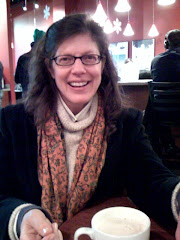





.jpg)

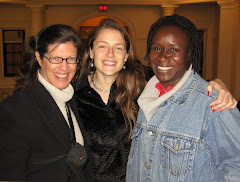.jpg)


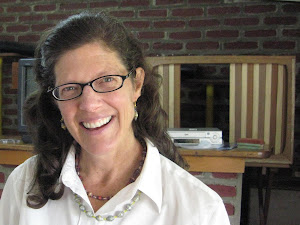.jpg)

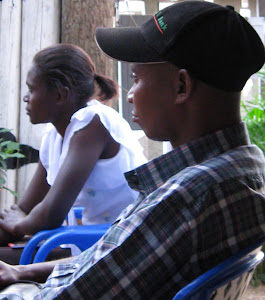.jpg)
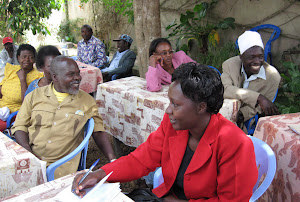.jpg)
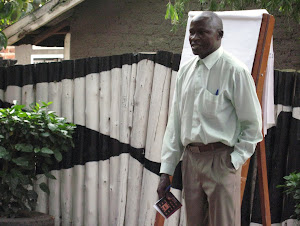.jpg)















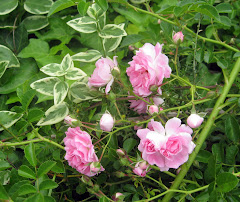












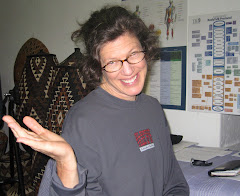



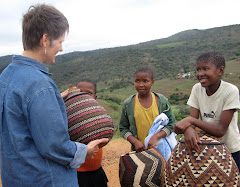.jpg)




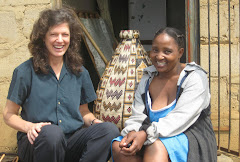










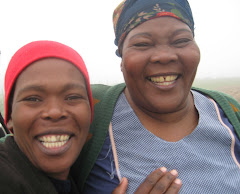.jpg)

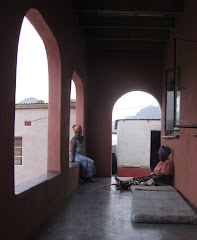.jpg)

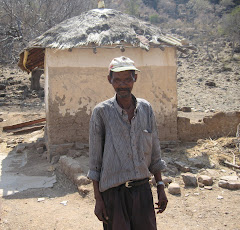.jpg)
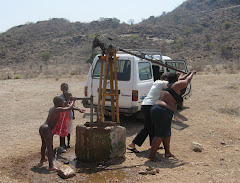.jpg)
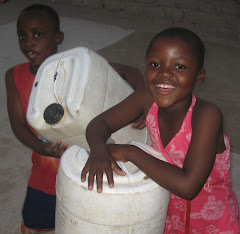.jpg)
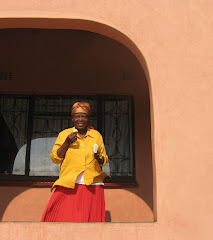.jpg)

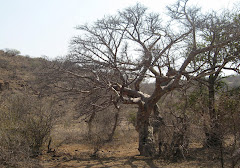.jpg)



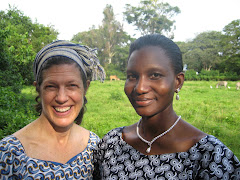



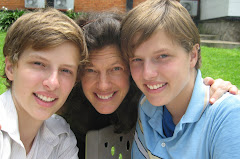.jpg)
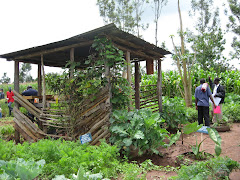
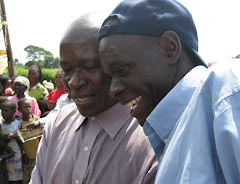.jpg)

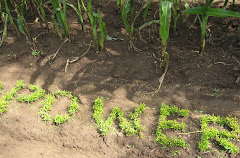.jpg)
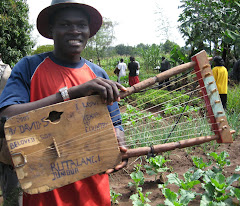.jpg)





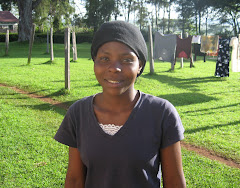.jpg)



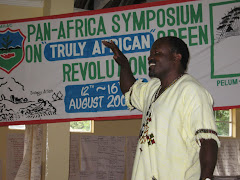

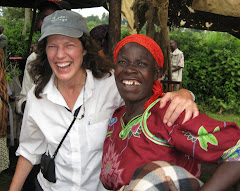.jpg)
















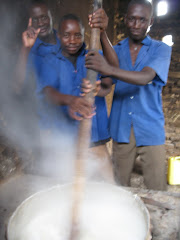.jpg)










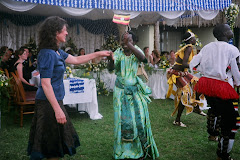.jpg)
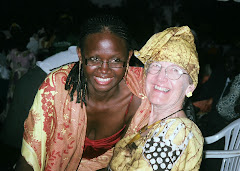.jpg)



